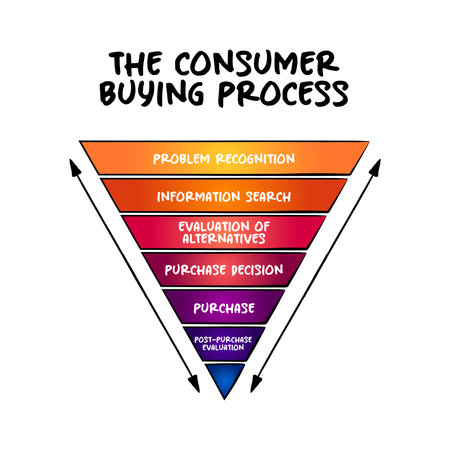Overview of Whole Life and Term Life Insurance
When you’re shopping for life insurance in the U.S., two of the most common choices are whole life insurance and term life insurance. While both types aim to provide financial protection for your loved ones, they work quite differently. Here’s a simple breakdown of what each type is and how they differ in structure and purpose.
What is Whole Life Insurance?
Whole life insurance is a type of permanent life insurance. This means it covers you for your entire lifetime, as long as you keep paying the premiums. One of its main features is that it not only provides a death benefit (the payout your beneficiaries receive when you pass away) but also includes a cash value component. Over time, a portion of your premium goes into this cash value, which grows at a guaranteed rate and can be borrowed against or even withdrawn under certain conditions.
What is Term Life Insurance?
Term life insurance is much simpler. It offers coverage for a specific period—like 10, 20, or 30 years. If you pass away during this term, your beneficiaries get the death benefit. If you outlive the policy, coverage ends and there’s no payout or accumulated cash value. Because it’s straightforward and temporary, term life insurance is often more affordable than whole life insurance.
Key Differences Between Whole Life and Term Life Insurance
| Whole Life Insurance | Term Life Insurance | |
|---|---|---|
| Coverage Duration | Lifelong (as long as premiums are paid) | Specific term (e.g., 10, 20, 30 years) |
| Premiums | Higher, fixed for life | Lower, fixed for the term |
| Cash Value | Builds cash value over time | No cash value; purely protection |
| Payout to Beneficiaries | Guaranteed (as long as policy is active) | Only if death occurs during the term |
| Main Purpose | Lifelong protection & savings/investment vehicle | Temporary protection (e.g., until kids are grown or mortgage is paid off) |
This overview gives you the basics of whole life and term life insurance so you can start thinking about which might fit your needs best.
2. Pros of Whole Life Insurance
Whole life insurance stands out from term life insurance because it offers more than just a death benefit. If youre considering your long-term financial security, understanding the unique advantages of whole life insurance is key. Lets explore the main benefits:
Lifelong Coverage
One of the biggest pros of whole life insurance is that it provides coverage for your entire life—as long as you keep up with your premium payments. Unlike term life insurance, which only covers you for a set period (like 10, 20, or 30 years), whole life insurance guarantees that your loved ones will receive a death benefit whenever you pass away.
Comparison: Lifelong vs. Temporary Coverage
| Feature | Whole Life Insurance | Term Life Insurance |
|---|---|---|
| Covers for Your Entire Lifetime? | Yes | No (Only for specific term) |
| Guaranteed Payout? | Yes (as long as premiums are paid) | Only if you pass away during the term |
Cash Value Accumulation
Whole life insurance policies have a built-in savings component known as cash value. As you pay your premiums, a portion goes into this cash value account, which grows over time on a tax-deferred basis. You can borrow against this cash value or even withdraw funds if needed, giving you extra financial flexibility that term life simply doesnt offer.
How Does Cash Value Work?
- Savings Growth: Part of each premium payment adds to your policy’s cash value.
- Tax Advantages: The growth in cash value isn’t taxed until you withdraw it.
- Access Funds: You can borrow against or withdraw from your cash value for big purchases, emergencies, or retirement.
Potential Dividends
If you choose a participating whole life insurance policy through a mutual insurer, you may be eligible to receive dividends. While not guaranteed every year, these dividends can be used in several ways—such as purchasing additional coverage, reducing your premiums, or even taking them as cash. This feature is unique to certain whole life policies and can help boost your policys overall value over time.
Ways to Use Dividends from Whole Life Insurance
| Option | Description |
|---|---|
| Add to Cash Value | Increase your policy’s savings component for faster growth. |
| Reduce Premiums | Use dividends to lower what you pay each year. |
| Buy Additional Coverage | Add more coverage without medical exams. |
| Take as Cash | Pocket the dividends as extra income. |
![]()
3. Cons of Whole Life Insurance
While whole life insurance offers lifelong coverage and builds cash value, it’s not always the perfect fit for everyone. Here are some common drawbacks to consider before you decide if whole life is right for you.
Higher Premiums Compared to Term Life Insurance
One of the biggest downsides to whole life insurance is the cost. Whole life policies usually come with much higher premiums than term life insurance, especially when you’re younger. This can make it difficult for many people to afford the amount of coverage they really need.
| Policy Type | Typical Monthly Premium (30-year-old, $500,000 coverage) |
|---|---|
| Term Life Insurance | $20–$30 |
| Whole Life Insurance | $300–$500 |
Why Are Premiums So Much Higher?
The higher premiums reflect the fact that whole life is designed to last your entire lifetime and includes a savings component (cash value), while term life only covers you for a set period.
Limited Investment Flexibility
The cash value part of whole life insurance grows at a guaranteed but relatively low rate. Unlike other investment options, you can’t pick where your money goes or adjust your strategy based on market changes. If your main goal is to grow your wealth, there are usually better ways to invest.
| Investment Option | Control Over Investments | Potential Returns |
|---|---|---|
| Whole Life Cash Value | Very limited (insurance company decides) | Low, steady growth |
| 401(k)/IRA/Stocks | You choose investments | Potenially much higher (but more risk) |
No Room for Adjustments
If your financial goals change or you want to take more investment risk, you can’t tweak the cash value investments inside a whole life policy like you could with a regular brokerage account.
Surrender Charges and Reduced Returns Early On
If you decide to cancel your whole life policy in the early years, you might face surrender charges and get back less than what you paid in premiums. The cash value also takes several years to build up meaningful value, so it’s not a great choice if you think you might need quick access to your money.
4. Pros and Cons of Term Life Insurance
What Makes Term Life Insurance Appealing?
Term life insurance is a popular option for many Americans because it is straightforward and budget-friendly. Unlike whole life insurance, term policies provide coverage for a specific period—such as 10, 20, or 30 years—making them especially attractive to young families or anyone looking to protect loved ones during critical financial years. Here’s why so many people choose term life:
Main Benefits of Term Life Insurance
| Benefit | Description |
|---|---|
| Affordability | Term life generally costs much less than whole life insurance, making it accessible even if you’re on a tight budget. |
| Simplicity | The structure is easy to understand—if you pass away during the term, your beneficiaries receive the payout. |
| Flexible Terms | You can choose the length of coverage that fits your needs, such as until your kids are grown or your mortgage is paid off. |
| No Long-Term Commitment | You aren’t locked into lifelong premiums; you only pay for the coverage when you need it most. |
Drawbacks of Term Life Insurance
| Limitation | Description |
|---|---|
| Impermanence | If you outlive your policy term, your coverage ends and there’s no payout, which can leave you uninsured later in life. |
| No Cash Value | Unlike whole life insurance, term policies do not build cash value or offer investment opportunities—you can’t borrow against them or use them as savings. |
| Rising Costs with Age | If you want to renew or buy a new policy after the initial term expires, premiums will likely be much higher due to age or health changes. |
| Lack of Lifetime Security | Term insurance doesn’t guarantee lifelong protection; once the term ends, your beneficiaries lose access to the death benefit unless you renew or convert the policy. |
Is Term Life Insurance Right for You?
Term life insurance works well if you want affordable, straightforward protection for a certain period—like while raising kids or paying off debts. However, it’s important to keep in mind that this coverage isn’t forever and won’t build any savings or cash value over time. Understanding these trade-offs can help you decide whether term life fits your financial plans and family’s needs.
5. Which Policy Might Be Right for You?
Choosing between whole life insurance and term life insurance can feel overwhelming, but it really comes down to your personal goals, financial situation, and what stage of life you’re in. Here’s a simple guide to help you figure out which policy could be the best fit for you.
Understanding Your Financial Goals
The right policy depends on what you want your insurance to do for you. Do you just want to protect your family if something happens to you? Or are you also looking for an investment or savings component?
| Goal | Best Policy Type | Why? |
|---|---|---|
| Temporary protection (e.g., until kids grow up or mortgage is paid off) | Term Life Insurance | It’s affordable and covers you for a set period when you need it most. |
| Lifelong coverage & cash value growth | Whole Life Insurance | It stays in place forever and builds cash value over time. |
| Budget-friendly option | Term Life Insurance | Lower premiums let you get more coverage for less money. |
| Leaving an inheritance or covering estate taxes | Whole Life Insurance | Pays out no matter when you pass away, as long as premiums are paid. |
Your Stage of Life Matters
Your age and responsibilities play a big part in which type of policy makes sense. Here’s how different stages might impact your choice:
| Life Stage | Recommended Policy Type | Reasoning |
|---|---|---|
| Young adults starting out | Term Life Insurance | You get maximum coverage at the lowest cost while building your financial foundation. |
| New parents/homeowners | Term Life Insurance (with conversion options) | Covers your family during high-need years, with flexibility to switch later if needed. |
| Nearing retirement or with lifelong dependents | Whole Life Insurance | You may want lifelong protection and potential cash value access for emergencies or legacy planning. |
| Seniors focusing on estate planning | Whole Life Insurance | Permanency and guaranteed payout can help with inheritance or final expenses. |
Your Personal Needs and Preferences
- If you like simplicity: Term life is straightforward—pay your premium, get coverage for a set time.
- If you want guarantees: Whole life offers fixed premiums, guaranteed death benefit, and cash value that grows every year.
- If flexibility matters: Some term policies let you convert to whole life later without new health checks.
A Few Questions to Ask Yourself:
- How long do I need coverage for?
- What’s my budget each month?
- Do I want my policy to double as an investment?
- Am I comfortable paying higher premiums for lifetime benefits?
The Bottom Line: Match Your Policy to Your Needs
No one policy is perfect for everyone. Think about where you are in life, what you hope to achieve financially, and how much you can comfortably spend. This will help point you toward the type of life insurance that fits just right for your unique situation.


